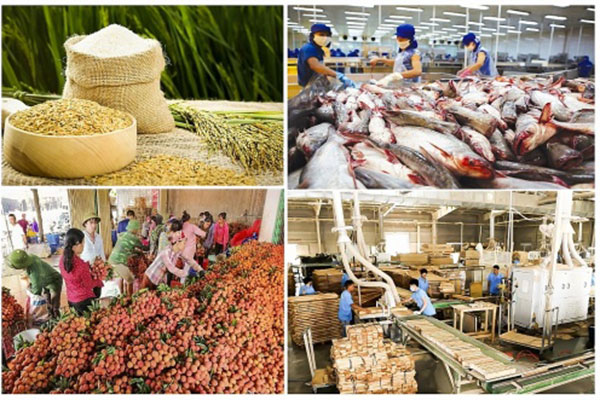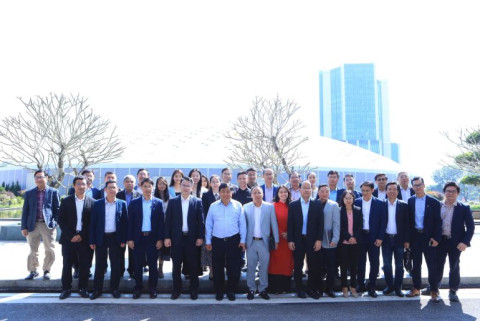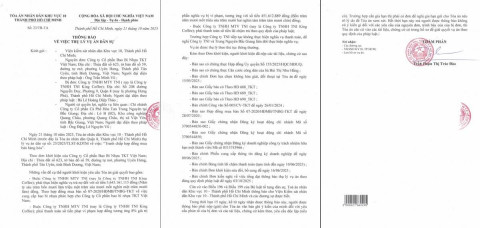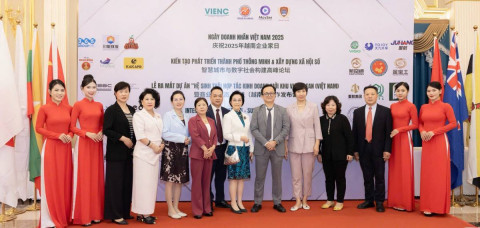What is driving the agricultural sector to make a breakthrough in export activities?
- 168
- Business
- 14:56 02/04/2024
DNHN - Agricultural exports have strong development potential, generating significant income for the Vietnamese economy. This is a driving force for promoting the Vietnamese agricultural sector in export activities and creating momentum for a breakthrough.

One of the important factors for Vietnamese agricultural products to be able to compete in the international market is to improve product quality. Investing in technology, modern production processes, quality control and compliance with international standards will help to enhance the reputation and value of Vietnamese agricultural products in the export market.
An efficient distribution and logistics system is essential to ensure that Vietnamese agricultural products can reach export markets quickly and reliably. Investing in transport infrastructure, warehouses and a delivery system will help to reduce costs and increase the competitiveness of Vietnamese agricultural products in the international market.
Building a strong brand and promoting it effectively is an important factor for Vietnamese agricultural products to stand out in the export market. Creating a reliable and prestigious image for Vietnamese agricultural products through promotional and marketing campaigns will attract the interest of international partners and create a competitive advantage.
Cooperation with international partners is an important way to facilitate the Vietnamese agricultural sector in export activities. Establishing strong partnerships, signing trade agreements and promoting production links will expand the consumer market and create conditions for Vietnamese agricultural products to access demanding markets.
In addition, the use of technology and the application of Artificial Intelligence (AI) can help to improve productivity and production efficiency in the agricultural sector. Technologies such as automated management, weather monitoring, market demand forecasting and production process optimisation can help the Vietnamese agricultural sector to improve product quality and increase competitiveness in the export market.
According to Mr Nguyen Nhu Cuong, Director of the Department of Crop Production (Ministry of Agriculture and Rural Development), although the area of rice cultivation is tending to decrease, in the 2024 production plan, the crop cultivation sector still aims to maintain the rice cultivation area of 7.1 million hectares, with the rice yield harvested in the year reaching over 43 million tonnes. Vietnam will still ensure the export of 8 million tonnes of rice or more.
With the above driving forces and factors, the Vietnamese agricultural sector has the potential to make a breakthrough in export activities. Investing in improving quality, developing a distribution and logistics system, building a brand, strengthening international cooperation and using technology are important ways for the Vietnamese agricultural sector to increase export efficiency and promote the sustainable development of the sector.
According to the latest statistics from the General Department of Customs (Ministry of Finance), rice exports in the first half of February (from 1/2 to 15/2) reached 150,944 tonnes, worth 104.33 million USD. Accumulated from the beginning of the year to February 15, rice exports reached 663,209 tonnes, worth 466.6 million USD. The average export rice price was 703.5 USD/tonne. Compared to the same period in 2023, the volume of rice exported increased by 14.4% (an increase of over 83,000 tonnes); while the export value increased by 53% (an increase of nearly 161 million USD). The average export rice price was 703.5 USD/tonne, an increase of 33.65% compared to the same period in 2023 (only about 526 USD/tonne).
Last year, rice exports also achieved quite impressive figures with 8.1 million tonnes, worth 4.68 billion USD, respectively increasing by 14.4% and 35.3% compared to the previous year.
In 2023, the largest rice export market for Vietnam was ASEAN, accounting for 61% of the total rice exports of the country with 4.9 million tonnes, an increase of 24% compared to the previous year. In addition, Vietnamese rice is also exported to other markets such as China, Ghana, etc.
Nhan Ha Phan
Related news
- Connecting Leaders, Shaping the Future: Strategic Leadership Planning Meeting – CorporateConnections Hanoi A
- Sunlight - Unilever Vietnam Recognized for Outstanding Contributions to the National Initiative Supporting Women Entrepreneurs
- Deputy Prime Minister Nguyễn Chí Dũng: “The country’s major challenges weigh heavily on my mind — and we must resolve them together.
- Unitsky String Technologies signs cooperation agreements with three Vietnamese partners, opening a new direction for smart mobility and sustainable development
- When artists do business – livelihood is no poetry!
- Before the D‑day to abolish flat‑rate tax: Fear of technology and costs leave small traders struggling to adapt
- Vietnamese enterprises at a crossroads: the impact of a potential US–China deal
- "Digital technicians" must not be forgotten if Vietnam aims to meet its strategic goals
- HDBank: Impressive profit growth, leading in profitability and advancing international integration
- TNI King Coffee sued for over VND 5 Billion in unpaid debts
- VINASME and Jeonnam Technopark Sign MOU on technology cooperation, human resource training, and trade promotion
- Vietnamese entrepreneurs strengthen ASEAN connectivity in the digital iIntegration era
- Prime Minister: Vietnam aims to become a regional logistics hub
- Vietnam upgraded to Secondary Emerging Market by FTSE Russell
- Hanoi’s economy grows 7.92% in first nine months of 2025, FDI surges nearly threefold
- Vietnam’s strong gdp growth fails to ease labor market distress
- US tariffs on Brazil propel Vietnam’s pangasius into global spotlight
- VietLeap AI Accelerator launches: A strategic springboard for Vietnam’s AI startups
- CICON expands strategic alliances: A new step forward in Vietnam–Korea business connectivity
- What must Vietnamese enterprises do to maintain their position in the global supply chain?
Đọc thêm Business
Connecting Leaders, Shaping the Future: Strategic Leadership Planning Meeting – CorporateConnections Hanoi A
"Your network is your most powerful flowing asset. It generates value, multiplies opportunities, and accelerates your influence across borders."
Innovative ESG enterprise: Trạm Xe Việt startup proposes solutions to build a green mobility ecosystem
As Vietnam commits to achieving Net Zero by 2050 and tightens emissions standards, the transportation sector faces unprecedented pressure to transform.
Deputy Prime Minister Nguyễn Chí Dũng: “The country’s major challenges weigh heavily on my mind — and we must resolve them together.
On the morning of November 26, 2025, Deputy Prime Minister Nguyễn Chí Dũng chaired a high-level working session at the National Innovation Center (NIC) in Hòa Lạc.
Unitsky String Technologies signs cooperation agreements with three Vietnamese partners, opening a new direction for smart mobility and sustainable development
The signing ceremony took place in Minsk, Belarus, on November 28, 2025.
Before the D‑day to abolish flat‑rate tax: Fear of technology and costs leave small traders struggling to adapt
From 1 January 2026 the flat‑rate tax regime will be abolished. Small business households will be required to declare tax based on actual revenue. MISA supports the transition with technology to help micro‑merchants adapt smoothly and transparently.
Vietnamese enterprises at a crossroads: the impact of a potential US–China deal
As the world closely monitors every shift in US-China relations, emerging signals of a strategic agreement between the two global powers are raising hopes for global economic stability.
HDBank: Impressive profit growth, leading in profitability and advancing international integration
Ho Chi Minh City Development Joint Stock Commercial Bank (HDBank, stock code HDB) announced its consolidated profit before tax for the first 9 months of 2025 reached VND 14,803 billion, marking a 17% increase year-on-year (YoY).
TNI King Coffee sued for over VND 5 Billion in unpaid debts
On October 21, 2025, the People’s Court of District 10 in Ho Chi Minh City officially accepted a civil lawsuit concerning a commercial contract dispute between TKT Vietnam Plastic Packaging Joint Stock Company and TNI King Coffee Co., Ltd.
VINASME and Jeonnam Technopark Sign MOU on technology cooperation, human resource training, and trade promotion
On October 15, 2025, in Hanoi, VINASME and Jeonnam Technopark (Korea) signed an MOU to promote trade, advance technology transfer, and develop human resources between enterprises of both nations.
Vietnamese entrepreneurs strengthen ASEAN connectivity in the digital iIntegration era
On the occasion of Vietnam Entrepreneurs’ Day (October 13), an international event themed “Integration – Innovation – Sustainable Development” was solemnly held in Ho Chi Minh City.











